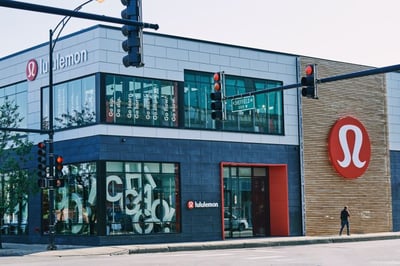October 9, 2025
.png?width=400&height=150&name=Untitled%20design%20(56).png) by Devyani Mehta / October 9, 2025
by Devyani Mehta / October 9, 2025

Ever wonder who decided to put names on Coca-Cola bottles?
It’s one of the most iconic packaging campaigns in recent history and a masterclass in shopper marketing. Even if you weren’t craving a Coke, seeing your name (or your friend’s) on the bottle made it personal, emotional, and most importantly buyable.
That’s the power of shopper marketing: influencing people not just what to buy, but when, where, and why. It's less about big-budget awareness campaigns and more about strategic nudges at the point of decision.
Shopper marketing is a retail-focused marketing discipline that uses data-driven insights to influence purchasing decisions at the point of sale. It goes beyond traditional advertising by enhancing the shopper experience, from store layout and product displays to digital offers and geo-targeted ads, to drive immediate sales both in-store and online.
In a world where consumers are bombarded with choices and attention is fleeting, shopper marketing bridges the gap between brand affinity and purchase action. To run shopper marketing effectively, brands often rely on retail software to manage store execution, campaign rollout, and analytics. It’s the reason you grab the limited-edition cereal box, linger at an endcap display, or tap an in-store mobile offer.
In this guide, we’ll break down what shopper marketing really is, how it works, why it matters in both physical and digital retail environments, and how to build a strategy that drives real results.
People love to speculate that brick-and-mortar stores are dying. In an effort to keep shoppers going to stores, shopper marketing is a key strategy used by many companies that sell consumer packaged goods.
While shopper marketing and consumer marketing may sound similar, they serve different, yet complementary, purposes.
Consumer marketing is about building long-term brand loyalty and fostering emotional affinity. It aims to influence how people feel about a product or brand, regardless of where or when they might buy it. Think of it as brand advertising you see on TV, social media, or billboards.
Shopper marketing, on the other hand, zeroes in on decision-making at the point of purchase, whether that’s in-store or online. It’s about influencing the moment someone is standing in the aisle or scrolling a product page, choosing between similar options.
| Aspect | Consumer Marketing | Shopper Marketing |
|---|---|---|
| Goal | Build brand awareness and emotional connection | Drive immediate purchase decisions |
| Target | General consumers | Active shoppers |
| Timing | Long before the purchase | Right at or near purchase |
| Channels | TV, social media, content, influencers | In-store displays, mobile ads, packaging, POS |
| Measurement | Brand lift, engagement, reach | Sales lift, conversion rate, foot traffic |
Both are critical. Think of consumer marketing as planting the seed and shopper marketing as harvesting the crop.
Shopper marketing drives both sales and brand equity by reaching consumers in those final, critical moments before they make a purchase. The best campaigns use a mix of physical, digital, and sensory tactics to influence decisions along the entire path to purchase.
When executed well, these tactics don’t just promote a product. They improve the shopper experience, reduce friction, and make it easier (and more enjoyable) to say yes.
Here are some of the most effective shopper marketing tactics used today:
Strategically placed displays help shoppers quickly notice and evaluate products — especially in crowded retail environments.
Giving shoppers a chance to try a product removes hesitation and boosts trial, especially in categories such as food, beauty, or beverages.
Discover key statistics on experiential marketing to understand its effectiveness.
Shopper marketing isn’t just visual, it’s multisensory. Music, scent, lighting, and even texture influence mood, pace, and purchase behavior.
According to one study, when background music is properly aligned with a brand's identity, shoppers spend around 42% more time in-store, and sales increase by an average of 37%.
Today’s shoppers are on their phones even while shopping in-store. Geo-fenced ads enable brands to connect digitally in real-time.
Shelf-edge messaging can be a powerful driver of in-aisle decision-making, especially when shoppers are comparing similar items.
Bundling drives both value perception and increased basket size. It’s especially useful for introducing new products or moving seasonal inventory.
Bundling appeals to both value-conscious and convenience-driven shoppers, particularly during the holiday season or back-to-school period.
Many major retailers offer apps and loyalty programs that brands can tap into for shopper marketing.
The most successful shopper marketing strategies blend multiple tactics across channels. It’s about creating a seamless, supportive experience from shelf to screen to checkout. When you align the right tactics with shopper behavior, you build stronger, more loyal customer relationships.
Here are three shopper marketing case study videos of Effie award-winning campaigns.
“Back to College After-Hours Shopping Event”
“We Got U at Walmart”
A well-rounded shopper marketing plan follows a structured framework grounded in behavioral insights, clear goals, and seamless execution across touchpoints. It’s not just about eye-catching displays. It’s about knowing your shopper’s mindset, anticipating their decisions, and delivering the right trigger at the right moment.
Before designing any tactics, you need to know who you’re trying to influence.
For example, a shopper persona for a mid-priced coffee brand might be a convenience-driven, digitally connected millennial who values sustainability and shops both in-store and online.
Every shopper journey has touchpoints that influence the final decision. Mapping them helps you identify where to intervene with marketing.
In the physical world, this would involve shelf placement, end-cap displays, and in-store demos. Similarly, in a digital world, it would mean mobile coupons, product comparison tools, and Instagram ads
Shopper journeys aren’t linear, so your strategy shouldn’t be either.
Now that you know who you're targeting and where they make decisions, select the right tactics for those moments.
In-store tactics:
Digital tactics:
Hybrid tactics:
Match tactics to shopper intent. Awareness-stage shoppers need info; decision-stage shoppers need nudges.
Even the best shopper marketing idea will fail without retailer buy-in. Build strong partnerships to integrate campaigns within retail environments.
For example, a snack brand might partner with Walmart to run an in-store “Snack Bar” display during the back-to-school season, offering digital coupons to Walmart app users.
Without measurement, you’re guessing. Use a mix of quantitative and qualitative data to track what’s working.
Key metrics:
Use tools like:
Then: refine, test new variables, and repeat. Shopper behavior evolves fast, so should your strategy.
Shoppers often research online and buy offline, or vice versa. Your strategy should seamlessly integrate physical and digital touchpoints. Consider: retargeting ads after store visits, or using store-exclusive QR codes that link to loyalty perks.
Even the most well-funded campaigns can flop if they overlook key elements. Watch out for these common pitfalls:
Many advertising agencies have large business units that focus on shopper marketing because of the immediate impact it has on sales. Together, traditional “above-the-line” advertising works with “below-the-line” shopper marketing to best serve your clients.
There are many ways to go about shopper marketing, but hiring an agency that specializes in it will best serve your marketing needs.
For example, companies like Starbucks have an entire internal team dedicated to shopper marketing and an entirely separate agency that works with them to implement shopper marketing tactics. Together, they drive sales in-aisle and online at the point of purchase.
Check out these shopper marketing agencies if you’re looking for experts in the field.
Consumer marketing builds brand preference over time. Shopper marketing drives purchase decisions in real-time, often in-store.
Yes. Digital shopper marketing employs tactics such as targeted ads, in-cart promotions, and product page optimization to influence e-commerce purchases.
It’s popular in CPG (consumer packaged goods), retail, food & beverage, electronics, and anywhere buy decisions are made in-store or digitally.
Key metrics include sales lift, conversion rate, foot traffic, basket size, and return on investment (ROI) from promotional spend.
If you're launching a new product, entering a new retailer, or lacking in-house expertise, an agency can help design and execute high-impact campaigns.
Shopper marketing isn’t just a trendy tactic. It’s a critical part of how brands influence purchasing decisions in real time. From product displays and demos to mobile-triggered promotions, shopper marketers bridge the final gap between intent and action.
Without it, shoppers stay in auto-pilot mode, and brands miss key conversion moments. However, with the right strategy, shopper marketing can turn ordinary shelf space into a powerful sales channel, transforming passive buyers into loyal advocates.
Explore top-rated retail POS software to streamline checkout, track in-store performance, and connect your promotions to actual purchase data.
This article was originally published in 2019. It has been updated with new information.
Devyani Mehta is a content marketing specialist at G2. She has worked with several SaaS startups in India, which has helped her gain diverse industry experience. At G2, she shares her insights on complex cybersecurity concepts like web application firewalls, RASP, and SSPM. Outside work, she enjoys traveling, cafe hopping, and volunteering in the education sector. Connect with her on LinkedIn.
While everyone is moving their businesses online, Lululemon Athletica Inc. is busy opening...
 by Deirdre O'Donoghue
by Deirdre O'Donoghue
Abandoned carts are one of the most maddening parts of running an e-commerce business.
 by Max Rice
by Max Rice
If you’re a small-business owner, you’ve probably looked at sites like Amazon and eBay and...
 by Lauren Fram
by Lauren Fram
While everyone is moving their businesses online, Lululemon Athletica Inc. is busy opening...
 by Deirdre O'Donoghue
by Deirdre O'Donoghue
Abandoned carts are one of the most maddening parts of running an e-commerce business.
 by Max Rice
by Max Rice


